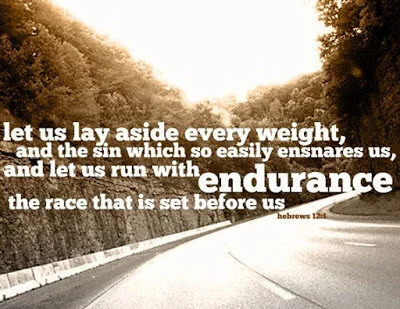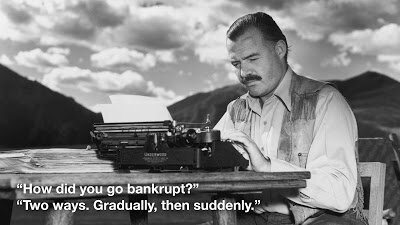Over the life of my career - 25+ years as a public sector leader followed by another nine years (so far) of executive coaching and management consulting - I have had the privilege to work with a multitude of organizations and leaders in a variety of sectors. What is somewhat surprising in that leadership journey is how many lessons stand the test of time despite how much we believe the world has changed. What is far more disappointing, however, is too many of us continue to make the same wrong assumptions, arrive at the wrong conclusions, look to the same tired solutions, and experience the same level of frustration that things don't magically get better.
The definition of insanity is doing the same thing over and over again...
and expecting a different result.
I'm certain the quote above is one you have heard many times before and perhaps even used yourself when trying to make your own compelling point. And it's been around for as many years as I can remember. So why doesn't remain true and compelling? What are we failing to learn from our mistakes or, more importantly, why are we failing to learn from our mistakes as leaders and as organizations?
One of the things I have come to believe is you cannot discover these lessons, learn from those experiences and do anything differently if you lack some form of humility and courage.
As leaders, it can be far easier on our person or egos to blame others around us or for a mistake, failure, or even disaster, than to admit we missed the signs, signals, and harbingers of doom.
Beyond that, we have to recognize and own our larger responsibility as owners, creators, and keepers of the systems and processes our staff have to work with (more on that below).
And finally, we have to demonstrate a commitment to ongoing learning and model a sincere willingness to really hear what others have to say about what is - and what is not - happening as it should, or what we expect for the organization. An unwillingness to be that open or honest can at best reflect naivety, maybe insecurity, and at worst pure arrogance.
From 1991 to 1993, I had a formative experience while completing my master's degree. Through my studies and an internship, I had the opportunity to learn implementing total quality management from two organizations. Through that I became exposed to the work of Dr. W. E. Deming and I further explored his teachings through my thesis on total quality management. It was eye-opening and his principles really struck a chord with me at the time. Over the succeeding years I have come back to his basic principles more than once. I have learned from other leadership gurus as well, but Deming's perspective has had continued value for me. I want to touch on only a few of his 14 Points with the belief that these have much to inspire those in leadership positions - or those looking for good leadership.
Point Seven - Institute Leadership
Dr. Deming calls on management to lead rather than to manage. It’s a simple statement but what does it really mean for us as leaders? Well, I'm pretty confident that if you were to talk to many frontline staff and management personnel outside of the executive suite, they would provide you with countless examples of where they felt they were being managed and not led. This bias towards "management" is without doubt enhanced by the pressure on organizations to perform and achieve better results. A typical management response is to exercise greater control and oversight to make sure results get better. More often than not, efforts of this nature only seem to put more barriers in the way of getting good work done - more reports to generate, more signatures to get, more unreasonable timelines to meet, multiple and conflicting demands, and failure to hear and act on input and recommendations from staff.
Point Eight - Drive Out Fear
My past leadership experience is certainly laced with a belief that fear might be an effective leadership tool. And maybe it can be in the short-term, but not if you are trying to create a high-performing organization for the long-term. With fear in an organization, there cannot be open communication, innovation, and teamwork - and these are all required for an organization to achieve the full measure of its potential. To my now evolved mind (😀), leadership of any organization - and at all levels of the organization - must actively model open communication, encourage appropriate risk taking and innovation, and promote teamwork at all levels, from the executive suite through to the front lines of operations. With fear in place, an organization shall continue to squander the full potential of its people and the organization to the detriment of those it purports to serve.
Point Ten - Eliminate Slogans, Exhortations, and Targets for the Workforce
Everybody needs to measure performance. Deming did not intend, nor do I suggest, that system performance not be evaluated on an ongoing basis. Rather, what Point Ten addresses is the notion of trying to assess an individual's performance without reference to an understanding of the system in which that individual works. If an individual is prevented from achieving higher levels of performance by a system (that management has created or allowed to be created), then performance managing an employee, setting new targets for them to achieve, and giving them "motivational" speeches will have little impact on performance. It is far more likely that such efforts will actually cause frustration, demoralization, and reduced performance.
Deming's red bead experiment is a great illustration of this principle - given an equal number of red and white beads, an employee is tasked with collecting only white beads with an employer-provided scoop or paddle. Inevitably, the employee collects some red beads in their assigned task. As a result of "failing" in their assigned task, the employee may be given further direction by their supervisor, there may be encouragement to do better, they may be applauded if their red bead count has gone down, or they may be chastised if their red bead count goes up. Regardless, their individual effort and various interventions at the personal level will have no impact on actual outcome. It's like expecting employee engagement scores in an organization to go up simply by saying that the target should be 10 out of 10 on the next engagement survey. Only by leadership changing the system will the organizational environment be better, more consistent results be achieved. I see a strong correlation between Point Ten and the need to Drive Out Fear from an organization as noted earlier. In fact, I believe that what leaders often create by exhortations to do better is an environment in which results and information are hidden through fear rather than discovered. And only by discovery can we improve.
Point Twelve - Remove Barriers to Pride of Workmanship
In this Point, Deming was referring to unclear expectations, lack of timely feedback (or any feedback), lack of training and support, and systems that focused on short-term results rather than long-term goals. Staff and front-line managers are often frustrated by multiple tasks or changing priorities (see Point Seven) as leaders change focus or react to external stimuli without, it seems, giving due regard to long-term objectives or stated core values. And unfortunately, more than one of us can relate to the fear that the performance evaluation process creates in us - either as provider or receiver of the experience. Too often this is because we establish the evaluation process as a one-time event, not as a continual process of discussion, engagement, and opportunity. There is a need too to ensure the evaluation process becomes an opportunity for leaders and staff alike to identify and invest in skills and intellect. It is also a great opportunity for leaders to model desired behaviours and reinforce common goals. On this latter point, I firmly believe there must be a high degree of visibility and sincere engagement with internal audiences on par with leadership visibility and engagement with external audiences. Without the kind of internal alignment that comes from such effort, the ability to deliver on commitments to external audiences and customers stands on shaky ground.
There certainly is more gold in Deming than I have covered here. In addition, what this hopefully reinforces, is we don't need to go looking for new ideas on leadership. There already exists a lot of knowledge - and common sense - upon which to enhance our leadership. Make it so!
———————————————————————————————————
Greg Hadubiak, MHSA, FACHE, CEC, PCC
President & Founder - BreakPoint Solutions
gregh@breakpoint.solutions
www.breakpoint.solutions
780-250-2543





































































